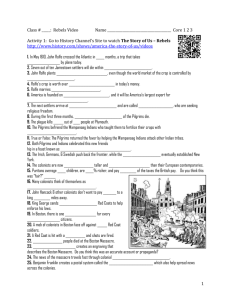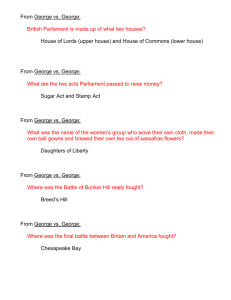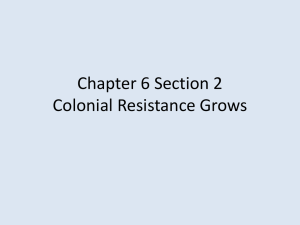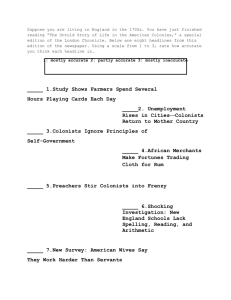Northeast
advertisement
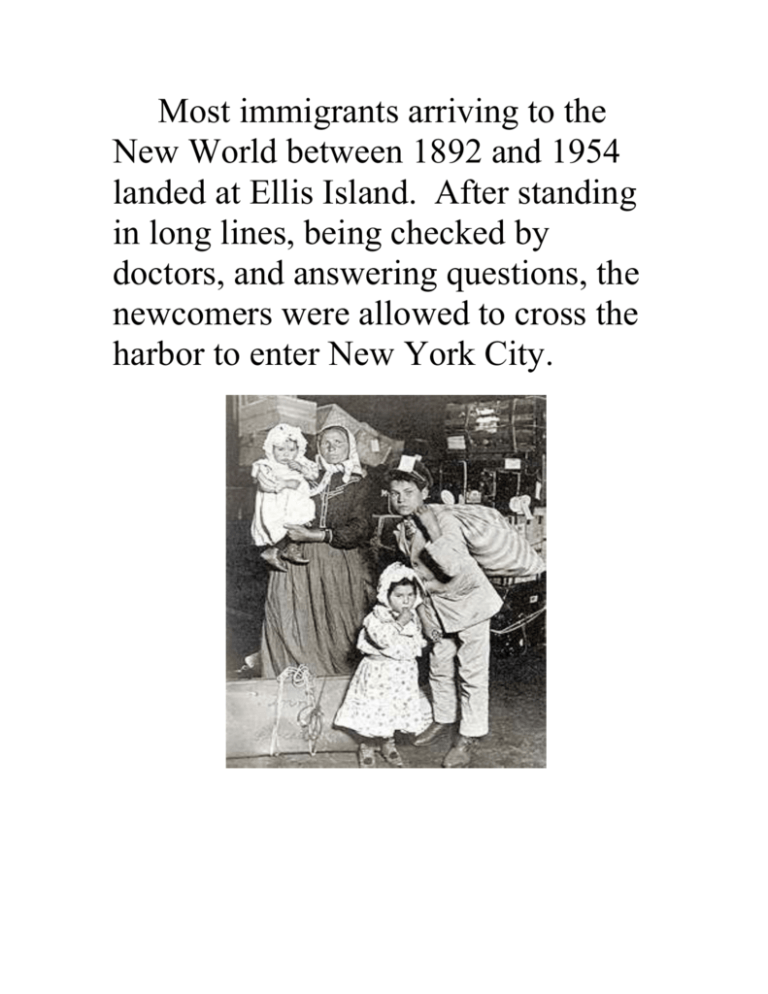
Most immigrants arriving to the New World between 1892 and 1954 landed at Ellis Island. After standing in long lines, being checked by doctors, and answering questions, the newcomers were allowed to cross the harbor to enter New York City. When the colonists were upset with England’s Tea Tax, they dressed as Mohawk Indians and dumped 342 crates of tea into the Boston Harbor. This protest became known as the Boston Tea Party. Over 90% of the nation’s lobsters are caught along the coast of the Atlantic Ocean. They are caught in traps baited with fresh crabs, clams, mussels, and worms. To cook a lobster, it is steamed in salt water for 10-15 minutes. Plymouth is on Cape Cod south of Boston. After the Mayflower anchored, it is believed the colonists stepped ashore on a large rock in the bay. Scientists believe the rock of 1620 was three times larger than it is today. Plymouth Rock is now considered a national treasure with many tourists visiting every year. Thomas Edison is known as the “Wizard of Menlo Park” because he was one of the greatest inventors in the world. His factory in Menlo Park was where he invented the phonograph, the light bulb, and the movie projector. The Iroquois Indians built longhouses made of evergreen and elm trees. Each longhouse was large enough for 20 families. The Iroquois grew corn, beans, and squash. They hunted deer in the forests. Their clothes were made of elk, deer, bear, and raccoon animal skins. Paul Revere was a silversmith who lived in Boston in the mid 1700’s. He used a signal of 2 lanterns hung in the bell tower of a Boston church to alert colonists that British troops were coming by sea. He is best remembered for riding his horse to Lexington to warn Samuel Adams, John Hancock, and colonists that the British were coming. The colonists in the New World wanted independence from England, especially King George’s many taxes and rules. Representatives from the 13 colonies met in the Continental Congress held in Philadelphia. Thomas Jefferson helped write a document, the Declaration of Independence, stating that the colonies wanted to be free from England. Soldiers from England fought against colonists in the Revolutionary War. Benjamin Franklin was the youngest son in a family of 17 children. He grew up in Boston and worked as a writer, printer, and inventor. His inventions included bifocal glasses, the Franklin stove, and the lightning rod. He is known for his experiments with electricity. He also signed the Declaration of Independence. Dewitt Clinton was a governor of a state in this region. He was instrumental in starting the construction of the Erie Canal. They began digging on July 4, 1817. Many people made fun of the canal and called it “Clinton’s Big Ditch”. America, The New World, the “Land of Opportunity” was a desirable place to live. People who had difficult lives in European and Asian countries often decided to move to America. In the past, these people brought only what they could carry in a suitcase or trunk and crossed the ocean to settle in America. European immigrants passed through Ellis Island. Asian immigrants arrived at Angel Island. Even today immigrants continue to move from other countries to live in the United States. In order for goods to be transported from the Hudson River to Lake Erie, a 363 mile long waterway was dug. It was 40 feet wide and only 4 feet deep. Along the way, a series of locks were built so boats could navigate safely. Boats were pulled through the Erie Canal by mules or horses that walked alongside the canal on a footpath. The Erie Canal was used 1825 to 1920 as a major waterway for transportation. It has been filled in to create Erie Boulevard. The Appalachian Mountains are a very old mountain range that stretch through two regions. These mountain peaks have worn down through years of wind and water erosion so the Appalachian Mountains are not very high. They are covered with thick forests and plant vegetation. There is a long hiking trail that extends over 2,100 miles along the mountain range. Other mountain ranges that are a part of the Appalachian Mountains include: the Catskills, the White Mountains, the Green Mountains, and the Allegheny Mountains. Sugar maple trees are the natural resource used to make the product maple syrup. Each fall, trees are tapped to collect the sap. The sap is boiled so the liquid evaporates and the sugar remains. Maple syrup is used on pancakes, waffles, French toast, ice cream and in many recipes. The Granite State once had a large industry quarrying granite. Granite is an igneous rock. It is used in building monuments, statues and even on kitchen counters. Cranberries are a part of many Thanksgiving dinners. They are also used in muffins, desserts, and beverages. Cranberries are grown in wetlands called bogs. They are harvested in the fall when the bogs are flooded. The berries come off the vine and float on the surface of the water where they are collected. Cranberry bogs are found throughout many states in this region. Did you know toothpicks are a chief product of a state in this region? Birch trees are used to manufacture toothpicks. Forests cover 90% of this state’s land area. The lumber from the forests is also used to produce paper, paper products, and furniture. Alfred Bulltop Stormalong is a tall tale character who lived on the shores of Cape Cod and Boston. Even as a newborn, Stormy was 18 feet tall! He loved the ocean and decided to become a sailor. Because he was so tall and strong, he was able to perform amazing feats, including wrestling an octopus. Many tales were told about this remarkable sailor. The Statue of Liberty was a gift from France to the American people to symbolize freedom. It was given in 1888. It had to be taken apart to be shipped across the Atlantic Ocean. Then it was reassembled in the New York Harbor. Immigrants long ago saw it on their way to Ellis Island. Today visitors to the United States see the 151 foot tall Statue of Liberty. Squanto was a Wampanoag Indian who lived in the early 1600’s. He spent some time living in England so he was able to communicate easily with the Pilgrims by speaking English. He helped them learn how to live in the “New World” by teaching them about the soil and weather. He also helped the colonists communicate with other Native Americans. Many stories tell that Squanto celebrated the first Thanksgiving with the Pilgrims, but he did not. The cod is a fish found in the Atlantic Ocean. Christopher Columbus noticed cod on his voyage to the New World. Cod are primarily found off the New England coast. It was caught, salted, and dried in order to be traded for slaves from Africa. Today cod is eaten as fillets or in chowder. A pilgrim is a person who makes a journey for religious reasons. A group of people from England was upset about the lack of religious freedom. These Pilgrims decided to go to the New World. They sailed on the Mayflower in September, 1620, and landed at Cape Cod in December. The Pilgrims established Plymouth colony. When William Penn established the government, he allowed citizens to take part in making laws and choosing religion. The bell was ordered to represent the pride the people felt in having that freedom. It was built in London, England, in 1751. The Liberty Bell is made of copper and weighs 2000 pounds. It was sent to Philadelphia and cracked soon after its arrival. The crack was repaired several times, but it remains cracked. It was rung for public announcements. On July 8, 176, it was rung for the first public reading of the Declaration of Independence. Today it is on display for visitors. Lighthouses are found along the shore of the Atlantic coast. They are tall towers with a bright light inside. Their main purposes are as a navigation aid and to warn sailors of dangerous areas. Originally they were all red brick, but then they were each painted with a different color or design. The first one was built in 1716 in the Boston Harbor. Milton Hershey only completed fourth grade. He established the Lancaster Caramel Company. He chose Lancaster because there was a large quantity of fresh milk available for making milk chocolate. In 1903 he built the world’s largest chocolate manufacturing plant. Today there are a number of places with the Hershey name: Hershey Museum, Hershey Gardens, Hershey Medical Center, Hershey School Trust, and Hershey Entertainment and Resorts. Jamestown was settled in 1607, even before the Pilgrims arrived. Captain John Smith was the leader. The settlement suffered much sickness and death. The settlers had trouble getting along with the Native American Indians in the area. Later they tried to grow tobacco but they were not successful. Right when they decided to abandon Jamestown, more settlers and supplies arrived from England.



